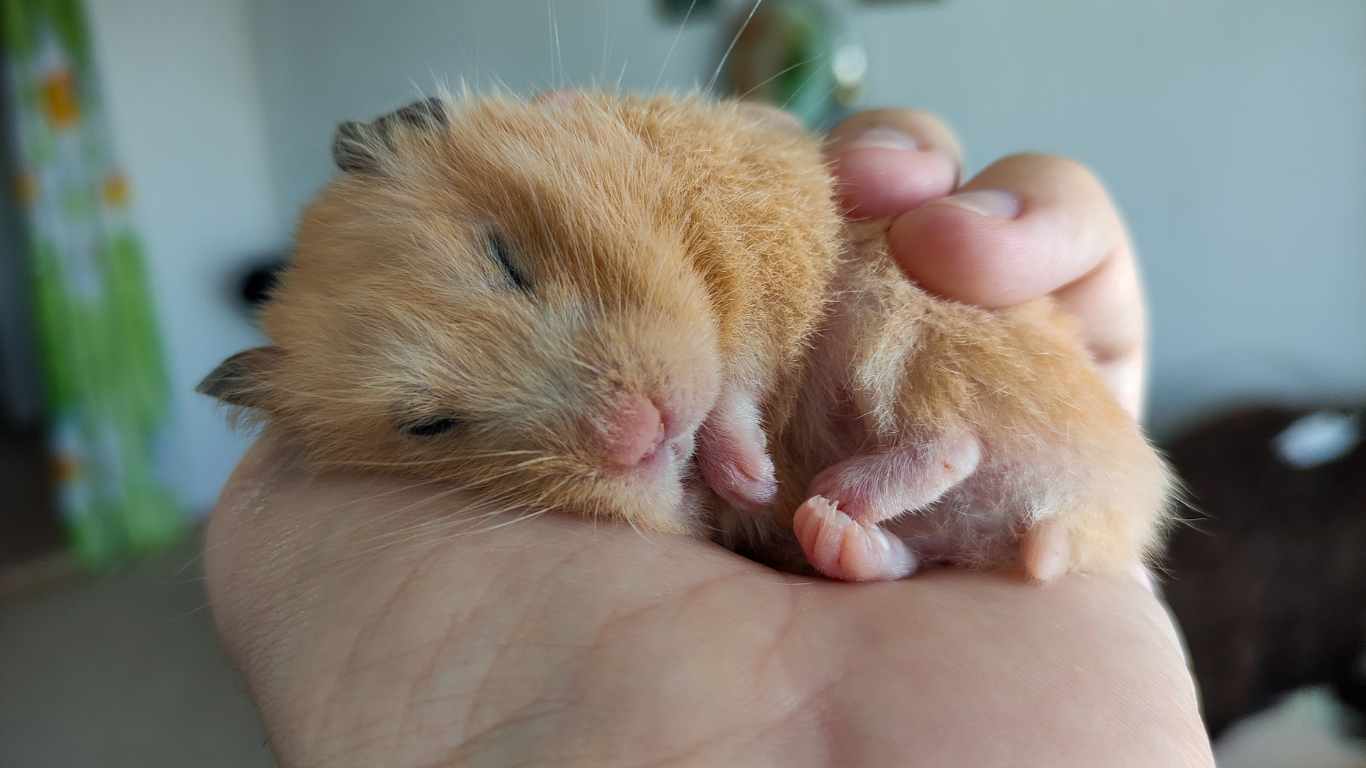Hamsters, those adorable little creatures that make popular pets, have fascinating sleep patterns and habits. As nocturnal animals, their sleep cycle and behaviors differ from those of daily pets like dogs or cats. Understanding their sleep patterns is essential for providing them with a comfortable and healthy environment. In this article, we will explore the intriguing world of hamster sleep and provide insights into creating a sleep-friendly environment for these furry companions.
Understanding Hamster Sleep Cycles
Similar to humans and other animals, hamsters go through different sleep stages. The rapid eye movement (REM) stage and the non-rapid eye movement (NREM) stage are both included in these phases of sleep. During REM sleep, hamsters may twitch, move their paws, or make small noises. NREM sleep is a deeper sleep stage characterized by more relaxed and restful behavior. A typical hamster’s sleep cycle lasts around 4-6 hours.
Factors Affecting Hamster Sleep
A number of different circumstances can influence the length and quality of sleep that hamsters have. Their patterns of sleeping are heavily affected by the surrounding environment. Ensuring a suitable cage setup and bedding is essential, as hamsters prefer a cozy and secure nesting environment. Noise and light levels can also disturb their sleep, so providing a quiet and dimly lit space is important. In order to ensure that they are comfortable at all times, it is essential to keep the temperature and humidity at the ideal levels.
Nocturnal Nature of Hamsters
Hamsters are nocturnal creatures by nature, which means that they are more active during the night than they are during the day. This behavior is automatic and influenced by their wild ancestors. Being active during the night allows hamsters to search for food and explore their surroundings while avoiding potential predators. As a result, it is common for hamsters to sleep during the day and become more active as dusk approaches.
Creating a Sleep-Friendly Environment
It is crucial to maintain an atmosphere that is conducive to sleep if you want your hamster to have a restful night’s sleep. Choose a suitable location for the cage, preferably in a quiet area away from excessive noise and foot traffic. Provide a cozy nest for your hamster to snuggle into using soft, comfortable bedding material. Regulate light levels by using a low-wattage bulb or covering the cage partially. Maintaining a consistent temperature and humidity will also contribute to their overall comfort.
Common Sleep Patterns in Hamsters
Hamsters typically follow regular sleep-wake patterns. They may sleep for several hours, followed by short periods of wakefulness to eat, drink, or engage in grooming activities. These power naps or shorter sleep bouts are interspersed throughout the night. External stimuli such as noise or sudden movements can interrupt their sleep, causing them to wake up and become alert.
Sleep Disorders in Hamsters
Just like humans, hamsters can experience sleep disorders. They risk developing a variety of health problems, which will have a negative impact on their well-being as a whole. Hamsters, like people, can have insomnia, which is characterized by difficulties going asleep or remaining asleep once it has started. Circadian rhythm disorders may also disrupt their sleep-wake cycle, resulting in irregular sleeping patterns.
Observing and Monitoring Hamster Sleep
As a responsible hamster owner, observing and monitoring your pet’s sleep habits is important. A relaxed and peaceful appearance typically characterizes healthy sleep in hamsters. They may curl up or stretch out in their nest, showing no signs of distress. If you notice any prolonged sleep disturbances or significant changes in their sleep patterns, it’s advisable to consult a veterinarian for further guidance.
Sleep-related Behaviors in Hamsters
Hamsters exhibit fascinating behaviors related to sleep. During REM sleep, they may twitch, make small noises, or exhibit movements similar to dreaming. Nest-building and burrowing behaviors are also common, as they create a cozy and secure space for sleep. Additionally, hamsters engage in sleep-related grooming and stretching exercises to maintain their hygiene and flexibility.
Adjusting Sleep Patterns
You may need to adjust your hamster’s sleep patterns in certain situations. For example, if you’ve recently adopted a hamster that is used to a different schedule, you can gradually help them adapt to your preferred sleep schedule. Introduce changes slowly, shifting their feeding and playtime gradually to align with your desired routine. Maintaining a consistent schedule will help them feel secure and comfortable.
Conclusion:
Understanding hamster sleep patterns and habits is crucial for providing a healthy and comfortable environment for these small pets. By considering their nocturnal nature, creating a sleep-friendly setup, and observing their sleep behaviors, you can ensure that your hamster gets the restful sleep they need. Remember, a well-rested hamster is a happy and healthy companion.
FAQs
How many hours do hamsters sleep?
Hamsters typically sleep for around 4-6 hours per sleep cycle, and they may have multiple cycles throughout the night.
Can hamsters sleep during the day?
Yes, hamsters are nocturnal animals and often sleep during the day. It’s normal for them to be more active during the night.
Should I wake up my hamster if it’s sleeping?
It’s best not to disturb your hamster while they’re sleeping, as they need uninterrupted rest. Allow them to wake up naturally.
Why is my hamster active during the night?
Hamsters are naturally nocturnal animals, which means they have adapted to be more active during the night when they feel safer to explore and search for food.
How can I ensure my hamster gets quality sleep?
You can create a sleep-friendly environment for your hamster by providing a quiet and cozy space, regulating light and noise levels, and maintaining a comfortable temperature and humidity.
